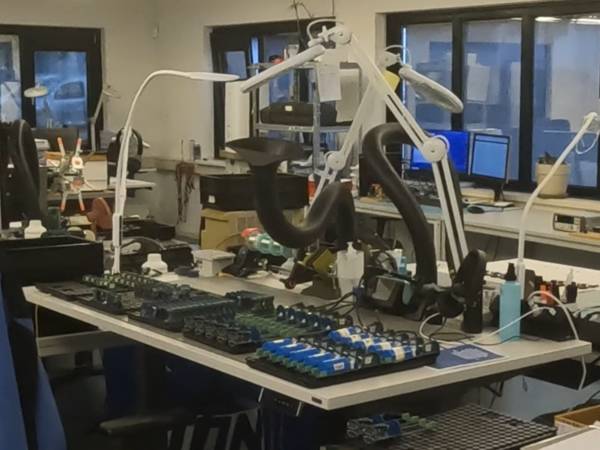Bringing in structure
Mohcine started his journey at Leiderdorp Instruments with an internship focused on developing a rain sensor. After graduating — and completing a final internship focused on optimising the service department — he chose to stay on at Leiderdorp Instruments while continuing his studies in automotive engineering. Jasper joined a little over six months ago on the production side, but soon transitioned to the service team to help clear the backlog. “When I started, I couldn’t believe how much work was waiting,” says Jasper. “But thanks to my experience in production, I was able to build momentum quickly.” Today, the team works together in a structured way to maintain continuity, even when the volume of repairs increases.
The challenges we faced
The service department used to struggle with inefficiencies. Processes were unclear, and multiple checks were done on the same components — wasting time and causing confusion. “There were situations where both the hardware and the sensor of a logger were checked twice,” explains Mohcine.
“Now we make sure the first check is done properly, which saves a lot of time.” They’ve since set up a streamlined process that eliminates unnecessary steps and provides clarity.
Another issue was the lack of structure around customer contact. That part is now handled by the sales team, allowing the service technicians to focus entirely on their core tasks.
Steps toward improvement
One key improvement was the introduction of a new intake document that allows incoming loggers to be registered quickly. Mohcine explains that this new system was designed to be easy to use, even for colleagues without a technical background. “The old documentation was written for engineers. With the new form, anyone can process a logger without needing technical knowledge.” The calibration process was also simplified, which saves even more time.
And for loggers with older 2G modems, the entire PCB is replaced (when possible) with a 4G-compatible version.
Results that speak for themselves
The impact of these changes is clear: customer satisfaction is up, turnaround times are down, and the process is smoother than ever. Jasper shares a recent example: “A customer dropped off several loggers on a Tuesday afternoon and asked if they could be ready by Friday. When they came back on Friday, the loggers were repaired and waiting. That kind of response makes us proud.” The backlog has now been cleared, and most loggers can be returned within a week, assuming the volume allows it.
Looking ahead
The team isn’t stopping here. Jasper is motivated to continue improving the department, and aims to structure it in a way that one person could manage it independently if needed. Mohcine adds that personal contact remains a big strength: “In our work, you deal with people. You can stop by, see who's working on your product, and have a direct conversation.”
With a new structure, greater efficiency, and a strong focus on the customer, the service department at Leiderdorp Instruments is now on solid footing.
Customers who once had to wait weeks for repairs will notice the difference right away. It’s a clear sign that customer focus and innovation can go hand in hand, and we’re ready to keep moving forward.

